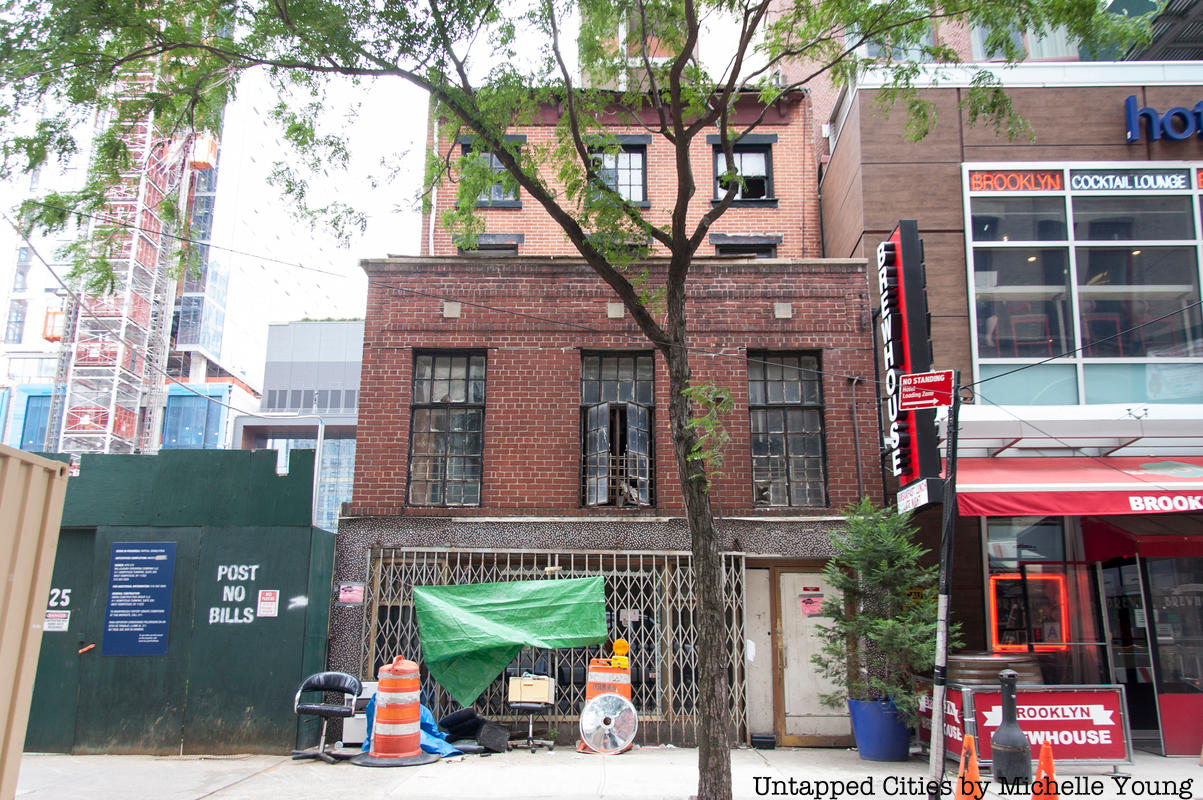New York City is full of sites purported to have been stops on the Underground Railroad, a system of safe houses that helped transport runaway slaves to freedom in Canada. While many were located in Manhattan, Brooklyn is home to a some notable locations. However, one of them is at imminent risk of demolition.
In Downtown Brooklyn along Duffield Street was a series of historical houses built around 1848 that residents believed were connected by tunnel. A trap door, exit shafts, covered wells, and other “architectural anomalies,” were used to substantiate the Underground Railroad claims that were at the basis of a 2007 lawsuit between FUREE (Families United for Racial and Economic Equality), a low-income minority activist group, and the City of New York, which wanted to condemn the properties to support the redevelopment of the area which has become Pacific Park (previously called Atlantic Yards). Today, the only one left of these rowhouses is 227 Duffield Street but yesterday, Gothamist reported that a demolition application had been filed with the Department of Building, and even more recently, an application to construction a new 13-story building.
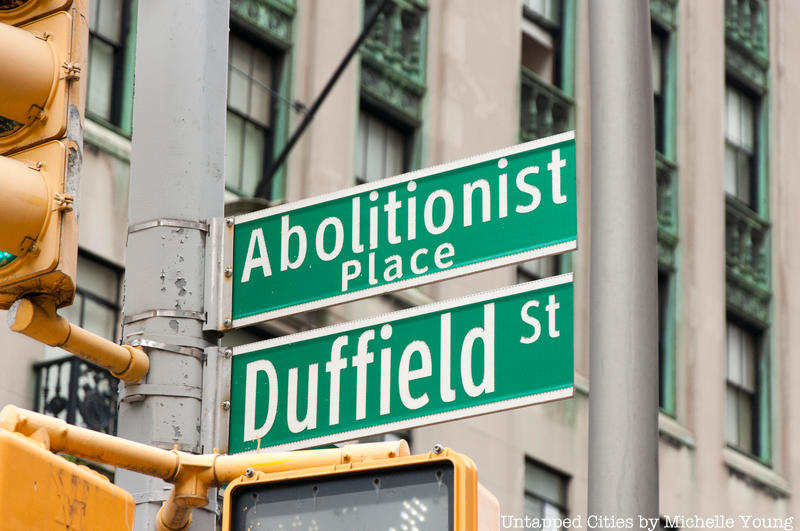
227 Duffield Street was once the home of Thomas and Harriet Truesdale, staunch abolitionists who moved to the house in 1850. Thomas was a delegate at the Rhode Island Anti-Slavery Convention, Harriet was treasurer and secretary of the Providence Female Anti-Slavery Society and a delegate and committee member of the Anti-Slavery Convention of American Women in 1838. Just nearby, Underground Railroad conductor William Harned lived at the intersection of Duffield and Willoughby streets. The blocked tunnels underground are thought to have led to the Bridge Street African Wesleyan Methodist Episcopal Church (today Wunsch Hall at Polytechnic University), another Underground Railroad stop and Brooklyn’s first African-American church. And not far away was the most famous of the Brooklyn Underground Railroad locations, Plymouth Church, nicknamed the “Grand Central Depot” of the Underground Railroad system.
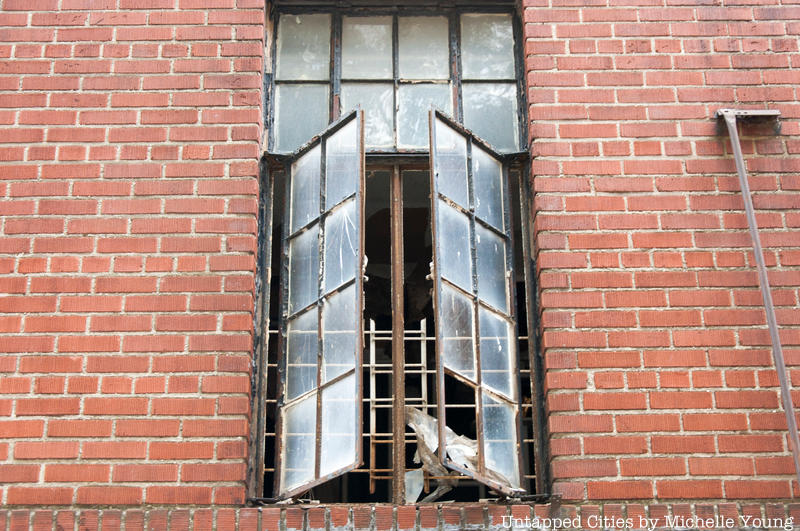
The lawsuit against the city was successful, and eminent domain halted. With strong support from local officials, including former Councilperson Leticia James (now New York State Attorney General) and U.S. Congresswomen Yvette Clark, 227 Duffield Street was saved from demolition in the redevelopment of downtown Brooklyn. As a concession, the city renamed this portion of Duffield Street Abolitionist’s Place in 2007, but neighboring sites 233 Duffield Street and 436 Gold Street were demolished and 227 remained unlandmarked which means put it at risk of demolition. Brownstoner previously took a deep-dive into the complicated ownership of the building with background on the current owner, who has been in the news and in court for some alleged unsavory deals (along with the demolition of a Victorian-era villa in Clinton Hill).
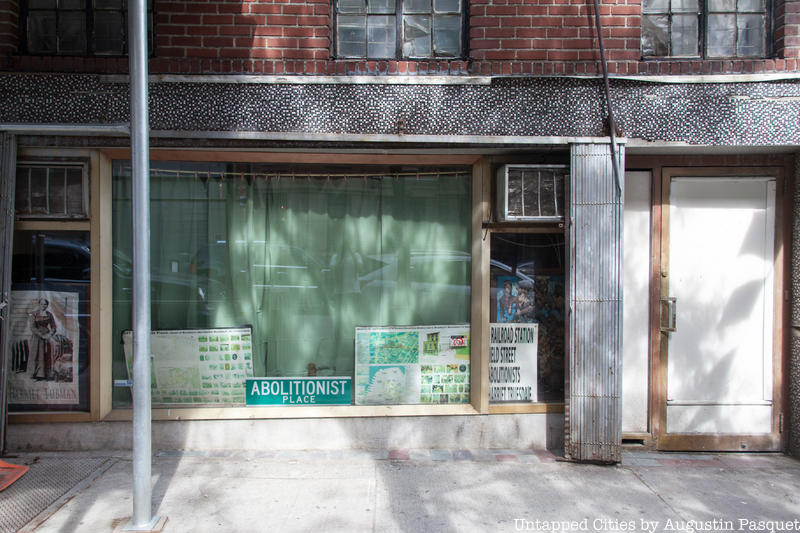 The storefront in 2016 when it still contained information from the 227 Abolitionist Place Museum and Heritage Center.
The storefront in 2016 when it still contained information from the 227 Abolitionist Place Museum and Heritage Center.
For a period of time, 227 Duffield Street was turned into the 227 Abolitionist Place Museum and Heritage Center run by Joy Chatel, the owner of the building who was a key part of the preservation efforts. She passed away in 2014, and in 2016 when we were researching this location for our book Secret Brooklyn: An Unusual Guide, the museum did not appear open any longer and messages through the organization’s website went unanswered. By January 2018, there was a complaint filed with the Department of Buildings that “vacant building doors are open and there is a homeless person living inside.” On March 21, 2019 the Office of the City Marshall placed a notice of the Marshal’s legal possession of the building. Most of the building appears to have been emptied at this time but there is still a framed illustrated image on the front windowsill clearly from the museum days.
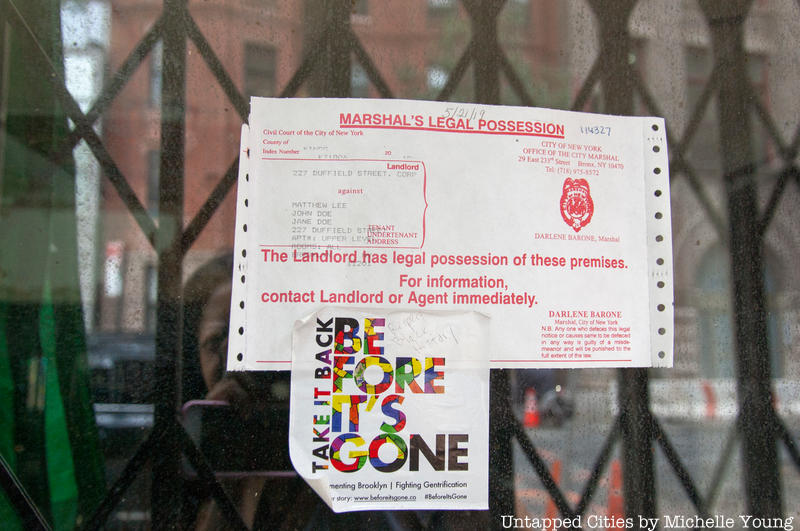
This June, a new campaign to save the building began but the unlike other landmarked Underground Railroad sites, Duffield Street has little recorded evidence of its role. But this is not uncommon: for safety reasons, precious little about the Underground Railroad in general was documented. So far, demolition permits have not been issued yet so there is a little time left. You can sign the Change.org petition which has a little over 3000 names so far.
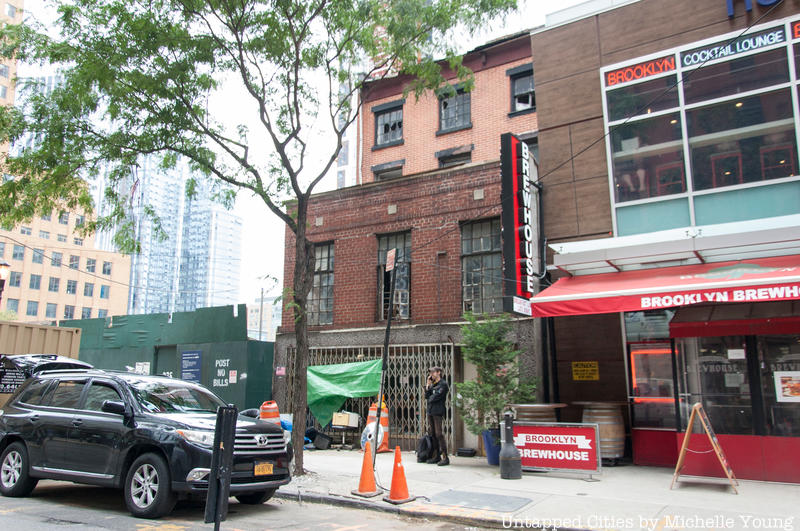
A driver parked outside, who kindly moved his minivan so we could get photos, lamented about the impending demolition. He noted the importance of the connection to the Underground Railroad and was disappointed that the new construction would not be in any way meaningful to the local community. “Probably another hotel,” he said gesturing to the one already in operation next door.
Next, check out 10 Stops on the Underground Railroad in NYC.






